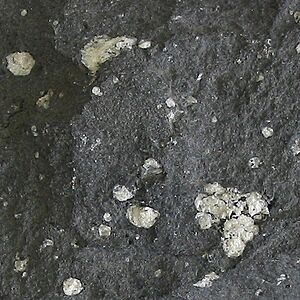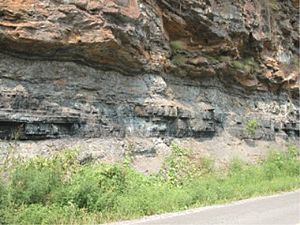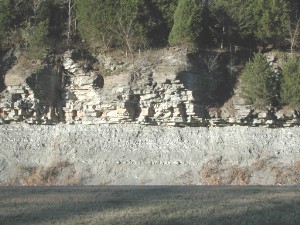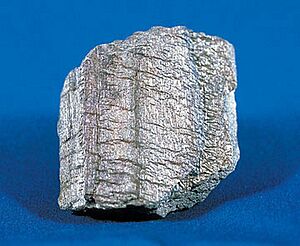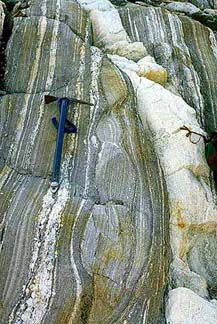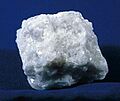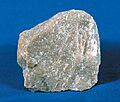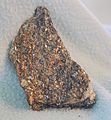List of rock types facts for kids
Rocks are all around us! From tiny pebbles to huge mountains, rocks make up a big part of our Earth. Geologists, who are scientists who study rocks, group them into three main types. These types are igneous rock, metamorphic rock, and sedimentary rock. Each type forms in a different way, telling us a story about Earth's past.
Contents
Exploring Earth's Amazing Rocks
Our planet is full of incredible rocks. They are made of different minerals and can look very different from each other. Scientists classify rocks based on how they were formed. This helps us understand Earth's history and processes. Let's explore the three main families of rocks!
Igneous Rocks: Born from Fire
Igneous rocks are like Earth's "fire rocks." They form when hot, melted rock cools down and hardens. This melted rock is called magma when it's deep inside the Earth. When magma erupts from a volcano and flows onto the surface, it's called lava.
- How they form:
- Some Igneous Rock Examples:
- Andesite: A gray or dark volcanic rock.
- Basalt: A common dark, fine-grained volcanic rock. It forms much of the ocean floor.
- Granite: A light-colored rock with visible crystals. It's often used in buildings and countertops.
- Obsidian: A shiny, black volcanic glass. It forms when lava cools very quickly.
- Pumice: A very light, porous volcanic rock. It can even float on water!
- Diorite: A speckled, medium-grained rock, often black and white.
- Gabbro: A dark, coarse-grained rock, similar to basalt but formed underground.
- Rhyolite: A light-colored volcanic rock, similar to granite but formed on the surface.
- Tuff: A rock made from volcanic ash and fragments.
Sedimentary Rocks: Layers of Time
Sedimentary rocks are like Earth's history books. They form from pieces of other rocks, minerals, or even living things. These pieces are carried by wind or water and then settle in layers. Over a long time, these layers get pressed together and harden.
- How they form:
- Weathering and Erosion: Older rocks break down into smaller bits called sediment.
- Deposition: Sediment is carried and then dropped in new places, often in lakes or oceans.
- Compaction and Cementation: Layers of sediment pile up. The weight presses them together (compaction). Natural glues (minerals) then bind the pieces (cementation).
- Some Sedimentary Rock Examples:
- Sandstone: Made from grains of sand cemented together. You can often see the sand grains.
- Limestone: Often made from the shells and skeletons of sea creatures. It's very common.
- Shale: A soft rock made from compacted mud and clay. It often splits into thin layers.
- Coal: Forms from ancient plant material that has been buried and compressed.
- Conglomerate: A rock made of rounded pebbles and gravel cemented together.
- Breccia: Similar to conglomerate, but with sharp, angular rock fragments.
- Chalk: A soft, white limestone made from tiny marine organisms.
- Dolostone: Similar to limestone, but contains more of the mineral dolomite.
Metamorphic Rocks: Changed by Heat and Pressure
Metamorphic rocks are "changed rocks." They start as igneous, sedimentary, or even other metamorphic rocks. Then, intense heat and pressure deep inside the Earth transform them. This process changes their minerals, texture, and structure.
- How they form:
- Heat: Rocks get heated by nearby magma or by being buried very deep.
- Pressure: The weight of overlying rocks or the movement of Earth's plates squeezes rocks.
- Chemical Changes: Hot fluids can also react with the rock, changing its mineral makeup.
- Some Metamorphic Rock Examples:
- Marble: Forms from limestone that has been heated and squeezed. It's often used for sculptures.
- Slate: Forms from shale under pressure. It's hard and splits into thin, flat sheets, often used for roofing.
- Gneiss: A banded rock with distinct layers of different minerals. It often forms from granite.
- Quartzite: Forms from sandstone. It's very hard and resistant to weathering.
- Schist: A rock with visible, flaky minerals like mica. It often has a wavy or layered look.
- Anthracite: A hard, shiny type of coal that has been metamorphosed.
- Serpentinite: A green, slippery-feeling rock, often formed from ultramafic igneous rocks.
Images for kids
See also
 In Spanish: Anexo:Tipos de rocas para niños
In Spanish: Anexo:Tipos de rocas para niños
- List of minerals
- Rock cycle – Learn how rocks change from one type to another.


